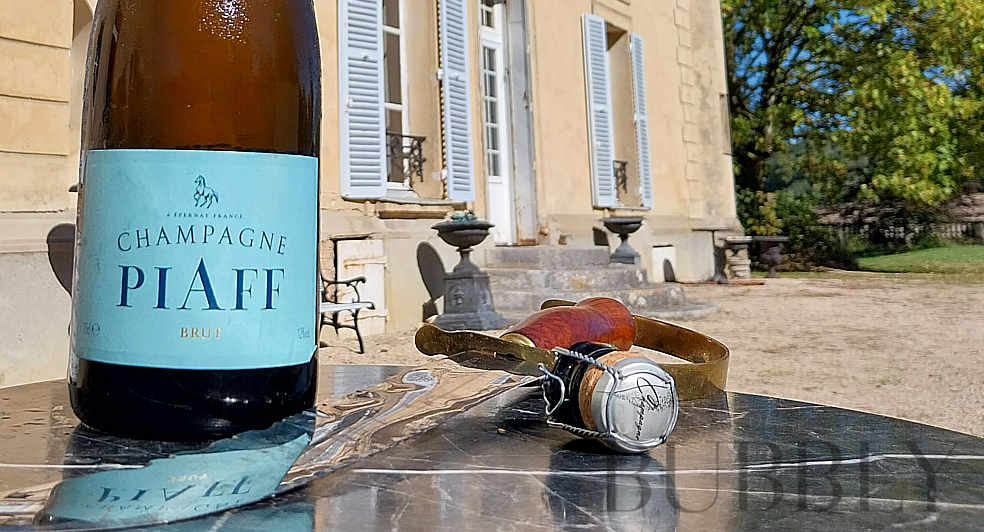The Art of Sabrage
27th March 2017

The Art of Sabrage originated in France during the Napoleonic wars. The story says that the legendary Barbe Nicole Ponsardin, known today as Veuve Clicquot, after her husband’s death (veuve in French is widow), took over the company and managed to became one of the largest exporters of Champagne for the royal courts in Russian Empire and France.
Along with the fame, came the fact that she was organizing parties for officers and high society. After the party, she would give a bottle of Champagne to the officers, to take away with them to be able to enjoy before the battle.
As the soldiers were riding on horse back, it was difficult to open the foil, the cage and take the cork out, while managing to ride the horse at the same time. So one day, a young officer took out his sword and beheaded the bottle with a stroke of his blade.
Ever since a new tradition, which soon became an art, was born: The Art of Sabrage.
But how is this done?
First at all Sabrage should not be executed by somebody who is not experienced, unless it’s under direct supervision of a Master Sabreur. It is highly recommended that the Champagne bottle is kept in the refrigerator, at least four hours before the sabrage. Don’t keep the bottle in ice, because the most important part of it – the neck – is the one that is not being chilled properly.
The ideal temperature of a Champagne bottle prepared for Sabrage is 45-48 F. This will help lower the pressure of the gas created in a Champagne bottle that is exposed to high temperature or room temperature. Technically speaking the solubility of a gas like carbon dioxide, increases with pressure and decreases with temperature. At room temperature, the pressure inside a bottle of Champagne is somewhere between 4.9 and 6 atmospheres. (The pressure in the tires of your car is just 2.2 atmospheres for comparison). In other words, the Champagne contains over 5 times its volume in the form of carbon dioxide, which is produced by the secondary fermentation in the bottle at standard atmospheric pressure. This gas is released when the cork is removed or when the bottle is broken. Therefore the lower the temperature the less risk there is of somebody getting hurt during the sabrage. The pressure of wine on the other hand, ensures that no glass falls back into the bottle, so the wine is nice and clean.
When you perform the Sabrage, you will have to hit the bottle at its weakest point. Every bottle of Champagne has two possible weak points. Let’s find them:
As you look carefully at the bottle, you will notice that there are two lines, two glass seams that run vertically from the bottom to the top, this is from when the bottle was made. Also, you will see at the top, the glass lip, known as annulus, that helps with wrapping the cage (the wire basket), known as a muselet around the neck of the bottle. Now the point where you want to hit the bottle with your sword is where the seam crosses the glass ring. This is the weakest point of the bottle.
If you decide to take the cage off, you can use the opposite part of the blade, not the sharp one. Make sure you tilt the bottle at 15-30 degrees, otherwise the cork will pop.
Although it is highly recommended that you take the cage off, I prefer to perform this operation with the cage on the bottle, just peeling the foil around the neck. I have two reasons for this.
1. By leaving the cage on, I am eliminating the risk of popping the cork before I grab my sword. A lot of times, the Sabrage is ruined because due to the pressure inside the bottle, once the cage is off, the cork pops.
2. The whole point of Sabrage was to let the soldiers ride their horses while opening the bottle. I would find this action very difficult to perform if you have to use your hands to secure the cork, open the cage, hold the sword and manage the horse at the same time.
So next time you decide to celebrate and open a bottle of Champagne, consider the traditional way – Sabrage.
Written by Harry Constantinescu
![]()
Glass of Bubbly
Executive editor of news content for the website Please enjoy the articles that we share - We hope you find our love for Champagne & Sparkling Wines both interesting and educational.
